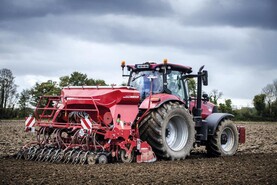Broken weather during harvest and fears of fusarium infection levels in malting barley signal the need for concern when we return to planting, especially for home-saved seed. Seed disease levels tend to be low in good ripening seasons and higher in very broken conditions. But this does not hold for every disease.
Many of our seed diseases spread during grain fill or harvest. This means that a healthy seed lot can quickly become infected if there is an infection source. Growers often see loose smut in barley crops – this signals the possibility of significant infection in the following crop if the weather is favourable for the disease. If seeds get infected at flowering, those plants will have smutted heads in the following crop.
These issues are far more relevant for anyone using home-saved seed and especially relevant to anyone planting undressed seed
The fact that the seed trade look after these issues for certified seed means that growers have little need to know about the specifics of the dressings used. But this is an important input into crop (cereal) production and growers should be aware of what different dressings do, and what they will not do. These issues are far more relevant for anyone using home-saved seed and especially relevant to anyone planting undressed seed.
The increasing prevalence of blackgrass and a growing interest in hybrid rye serve to elevate our concern regarding ergot as a potential problem. In this regard, it is good to see the Pollen Plus technology developed and incorporated into hybrid varieties, at least those from KWS. The natural control technique is particularly useful, as there is no chemical control available for this deadly disease.
Rate per seed, rather than rate per hectare, is a challenge
As well as the dressing itself, having it applied at the correct rate and in a precise manner is also important. Rate per seed, rather than rate per hectare, is a challenge. Obligatory testing of seed dressing units will help to assure growers that the job is being done to the limits of what is possible.






 This is a subscriber-only article
This is a subscriber-only article










SHARING OPTIONS: